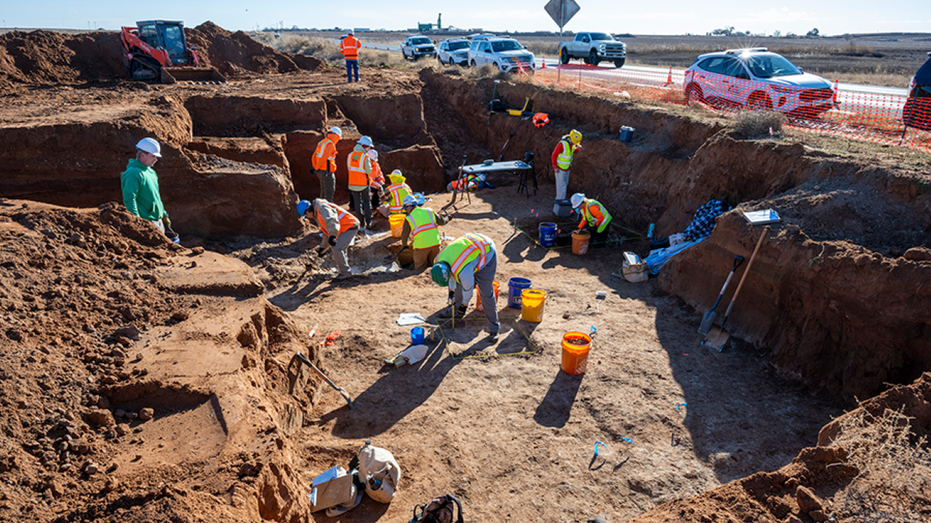- by architectureau
- 24 May 2025
Composed in contrasts: 2025 Dulux Study Tour, Barcelona
During the final leg of the tour, participants discovered that Barcelona?s beauty lies not in aesthetic cohesion, but in the city?s imperfections and rich layering of styles, ideas and histories.
- by architectureau
- 24 May 2025
- in architects

"Barcelona is full of imperfections," architect and CEO of Guiding Architects Barcelona Lorenzo Kárász told the winners of the 2025 Australian Institute of Architects Dulux Study Tour during a cycling tour of the city. Kárász was quick to emphasise that the city's beauty lies not in perfection, symmetry nor stylistic harmony, but in the complex layering of styles, ideas and histories embedded within the built environment.
Kárász illustrated his point with a visit to the Mercado de Santa Caterina, originally opened in 1848 and restored in 2005 by Enric Miralles and Benedetta Tagliabue (EMBT). He explained that during the restoration project EMBT deliberately replaced a fallen baluster upside down - a gesture intended to highlight imperfection and unpredictability, and to capture a moment in time rather than conceal history. The intervention embraces imperfection, and more broadly, offers and honest reflection of life's inherent flaws and unexpected turns.
Marni Reti, one of the five participants on the Dulux Study Tour, described Barcelona as having a playful quality in its architecture. She observed that, compared to the other cities visited on the tour - Amsterdam, Rotterdam and Copenhagen - the architecture in Barcelona felt like "an antithesis." This was particularly true of Copenhagen, she noted, which appeared "more regimented, rhythmic and regulated in its architectural outcomes" in contrast to Barcelona's complex and disordered layers of history and culture. Reti agreed with Kárász's view that the city's architecture doesn't always follow a cohesive style and is instead defined by layering, "but I think that's part of the whimsical nature of the city," she said.
Though the city might resemble a patchwork quilt with architecture that often stands apart and speaks for itself, tour participant Kate Shepherd observed that the city follows a well-organised and cohesive urban plan. "It all sits within a very structured framework," she explained, referring to the grid of octagonal blocks with chamfered corners and uniform block sizes.
Building on this idea of structure enabling creativity, tour participant Nicholas Souksamrane likened Barcelona's gridded urban plan to that of Melbourne. "The strong grid in both cities allows the buildings to be a bit more playful," he said, "in contrast to Sydney, where the streets are wonky and irregular, so the architecture tends to be less fun."
A visit to Plaça de les Glòries, a newly opened urban space where three of the city's major thoroughfares intersect, was generally regarded as a much-needed addition to the city by tour participants. They observed that, in comparison to the other cities visited on the tour, Barcelona offered less in terms of green space and the public realm. Shepherd acknowledged that there did seem to be a current, deliberate effort to address this. She noted that, in the early 2000s, Barcelona had focused on creating bold, standalone architectural objects in empty fields - structures designed to be visually striking and make a statement. "Now they seem to be filling in all the gaps and dissolving the threshold [between architecture and public space]," she remarked.
For tour participant Jimmy Carter, the most unexpected insight from Barcelona was the ability of young firms to demonstrate their ideas through practice, taking on large-scale projects that smaller firms in Australia might not typically have access to. Carter discerned this after meeting with the founders of MAIO Architects and Lacol Cooperative Architecture, two young firms leading multi-residential projects. MAIO's first new-build project was a 22-dwelling housing block titled 110 Rooms (2016), while Lacol's debut project was La Borda (2018), a 28-unit cooperative housing development.
"In my experience, this is not something that often happens in Australia (or Melbourne), as this size of project is left to trusted architects and outcomes are very specific because of the required profit expectations of the developer," Carter reflected. "It seemed the two firms were given these opportunities because of their dare and rethinking of present-day problems," specifically through research-driven approaches. This is a stark contrast to Australia, where firms are often expected to prove the viability of their research through prior built work before being trusted with larger commissions.
Another tour participant, Gumji Kang, was similarly struck by the ambition of Barcelona's emerging practices - particularly their willingness to engage with regulatory and societal challenges at the intersection of architecture and government. Rather than operating solely within traditional design roles, many of the firms visited were, as she put it, "shifting the needle and prioritising practical solutions and efficient design" through advocacy. She found this especially noteworthy given the strict design regulations in Spain.
This willingness was particularly evident during the visit to La Comunal, a cooperative workspace by Lacol Cooperative Architecture that houses ten organisations (including Lacol's own office). Founded in 2009 during the global economic crisis, Lacol is a worker-owned architecture cooperative that has been actively promoting a socially driven, more accessible and affordable cooperative housing model. One of the founders of Lacol Carles Baiges explained that the practice's approach extends beyond design, with some team members dedicated full-time to advocacy (part of which involves lobbying for policy changes that support greater access to cooperative housing models).
Kang found the intersection of architecture and politics in Lacol's work noteworthy, commenting on the need for a similar shift in Australia: "It's such a tiny subsection of the architecture industry that focuses on advocacy or policy. I think there needs to be a general uplift in trying to engage with the political and financial spheres."
"Maybe I'm just speaking for myself here, but it feels like at times we don't really know what our role as architects is beyond design. I think we [as an industry] should be actively acknowledging and encouraging the idea that there are different pathways you can take as an architect," Kang added.
Shepherd echoed those sentiments, stating that, "fundamentally, architects are problem solvers, but the solution doesn't necessarily have to be a built outcome."
Adair Winder is travelling with the 2025 Dulux Study Tour. Follow #2025DuluxStudyTour on social media and the blog.
- by foxnews
- descember 09, 2016
Texas road construction unearths 'colossal' prehistoric remains of 'big ol' animals'
Archaeologists in Texas recently discovered prehistoric megafauna bones, including a giant ground sloth, during a highway project in Lubbock, according to officials.
read more




